How to Rank Your Videos and Improve Your Website SEO with YouTube SEO
YouTube SEO can be used to improve video performance on YouTube or to increase traffic to your website. But how you decide to use YouTube SEO depends on your goals. This post will cover the basics. It’s a complex topic, so get a cup of coffee and stay awhile!
Article by Colette Nichol, Story Strategist, SEO Expert, and Solo Filmmaker
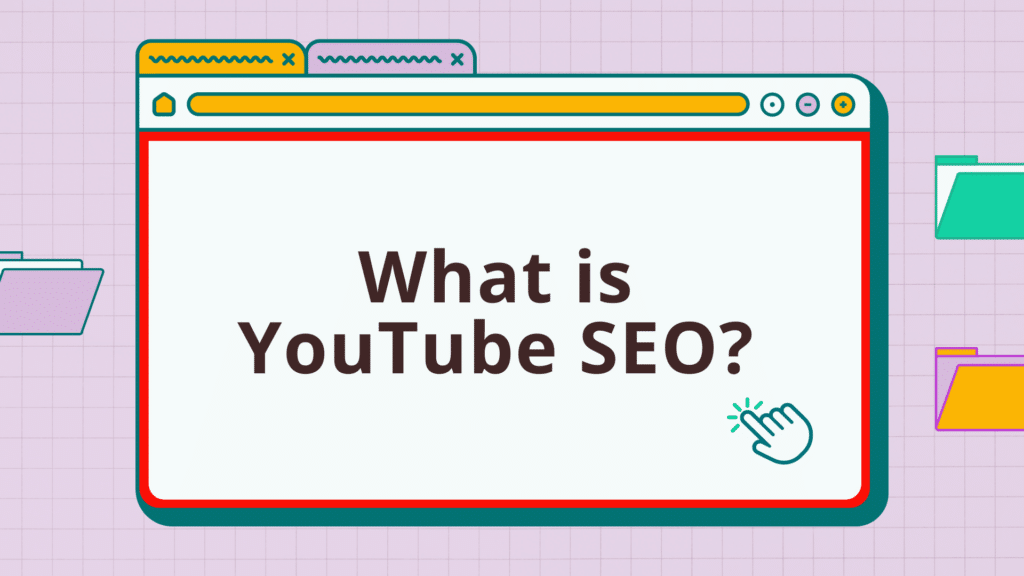
In 2015, I accidentally got one of my videos ranked at the top of YouTube.
Over the years, this video has amassed more than 500,000 views. This one video is the reason my channel has subscribers. I didn’t make this video strategically. I just needed to explain something to one of my clients, and I figured it would help other people as well. Turns out it did!

I’d made a brand video for a client, and he needed to upload that video to his Facebook page.
He wasn’t sure how. So I made a tutorial! And just like that, the views started to roll in.
Why?
Because I was the first person on YouTube to make a video about that topic. There was NO OTHER video showing people how to do this one simple thing.
On YouTube, being the first to grab a keyword IS A HUGE WIN.
The competition for big topics is stiff on YouTube. So when starting out, it’s better to focus on low-competition keywords and niche topics. As you create videos and observe how they perform, you’ll learn what works for your niche.
This article is based on what I’ve learned from creating successful and unsuccessful videos for my own channel as well as the traditional SEO and YouTube SEO work I’ve done with clients.
As I learn more, I’ll come back and update this post. But for now, these are the basics that EVERYONE getting started with YouTube SEO should know.
I’m going to be perfectly honest with you: video SEO isn’t easy, and getting your videos to rank on YouTube and Google isn’t easy.
The big channels you see on YouTube are run by teams of people.
They have time, money, and expertise. So if you’re planning on starting scrappy and doing everything yourself, please know that it’s going to take time.
BUT if your aim is to grow an existing business, you can combine YouTube SEO with a pillar page strategy for your website and get great results without making hundreds of videos. In fact, with 10 to 20 videos per year combined with a well-optimized website, you can grow your business dramatically.
On the other hand, if your aim is to become a YouTube creator and build a YouTube channel that you can monetize, you’ll need to make this a part-time job.
OK, now let’s get into the details of what YouTube SEO actually is and how you can start doing it!
Table of Contents
Click here to open the table of contents.
- What is YouTube SEO?
- YouTube and Google Are Search Engines
- How Can SEO for YouTube help my business?
- How does YouTube SEO work?
- YouTube Wants the Viewers to Be Happy, Kinda
- How Important Is SEO for YouTube?
- How Do You Do SEO on YouTube?
- YouTube for Business Owners and Entrepreneurs
- Top YouTube SEO Tools
- Free SEO Tools for YouTube
- Other Keyword Research Tools
- Top YouTube SEO Tips for Ranking Videos
- How to Get Started with SEO for YouTube
- YouTube SEO vs. Regular On-Page Organic SEO
- Best Course for Learning YouTube SEO
- Common Questions about YouTube SEO
- Google vs YouTube
- Why You Should Use Video SEO with a Pillar Page Strategy
- DIY Video vs. Premium Video
- How to Make Videos that Don’t Look Totally DIY
- Quantity vs. Quality
- Work with an SEO Consultant or Expert
- What Will YOUR YouTube SEO Plan Look Like?
What is YouTube SEO?
YouTube SEO is a process where you optimize your videos to show up for existing keywords (words and phrases) your audience is searching on YouTube and other Search Engines.
To optimize your videos for YouTube, start by choosing a keyword your audience is already searching for as the topic of your video.
Create content that fully develops the topic, then optimize your video title, thumbnail, content description, and tags for that keyword. Add a table of contents (also known as video chapters) and subtitles to optimize your YouTube video even further.
Next, embed your video on a website page or blog post that is relevant to the topic of the video.
Finally, share your video as widely as possible within the first 24 hours it goes public.
These are just a few actions you should take to optimize your YouTube videos for search. Keep reading this post for more details on how to get your videos to rank on YouTube using SEO techniques!
8 YouTube Optimization Basics:
Follow these eight steps to optimize your videos from start to finish.
- Optimize videos for specific keywords searched on YouTube and other search engines.
- Select a keyword relevant to your audience as the topic of your video.
- Use VidIQ or TubeBuddy to find the keywords.
- Create content that thoroughly explores the chosen topic.
- Optimize the video title, thumbnail, content description, and tags for the selected keyword.
- Add a table of contents (video chapters) and subtitles for further optimization.
- Embed your video on a relevant website page or blog post.
- Share your video widely within the first 24 hours of it going public for optimal reach.
If you just do these eight things, you’ll be ahead of most website owners and most video creators.
YouTube and Google Are Search Engines
YouTube is both a media platform and a search engine. There are 122 million active users on YouTube every day.
We don’t know how many daily searches are performed, but I can imagine that there are at least 122 million searches per day as well! With over 2 billion active users every month, there’s a lot of action on YouTube.
That said, Google is even more popular than YouTube.
There are 9 billion searches done on Google every single day. Half the world’s population uses Google! That’s a lot of freaking people! Because YouTube and Google are owned by the same company, they work beautiful together.
I’ve seen amazing results when my clients combine YouTube and a website strategy with pillar pages and great on-page SEO. More on that later!
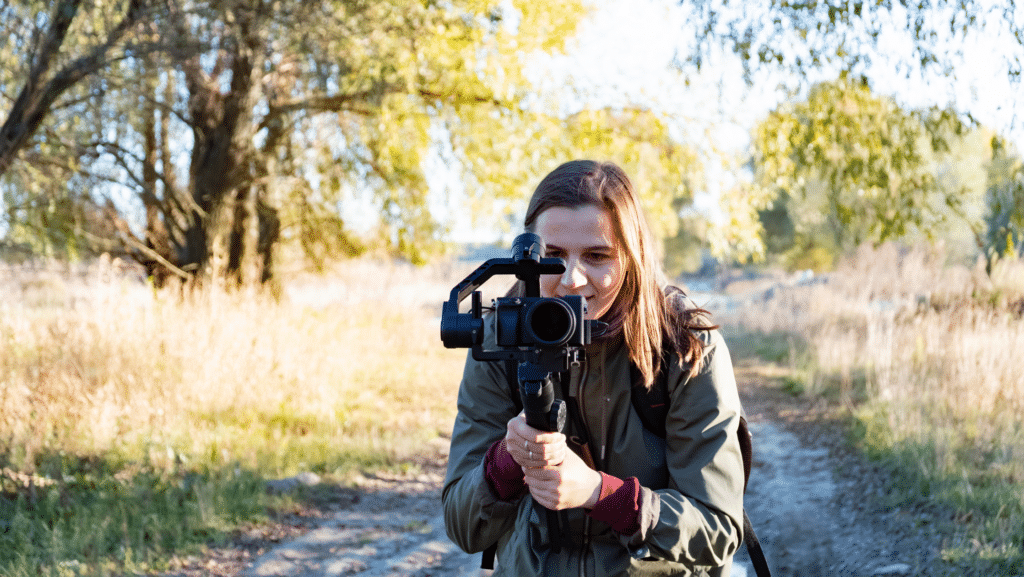
How Can SEO for YouTube help my business?
There are two main ways that SEO for YouTube can help your business:
1) If your niche spends a lot of time on YouTube, you can grow your email list by creating a YouTube channel that converts viewers to email subscribers.
2) If your niche is more likely to Google topics related to your business than use YouTube, then a well-optimized channel with relevant SEO-optimized videos will help your website’s on-page SEO. In other words, your YouTube channel can help more organic traffic from Google to your business website.
What’s the point of a bigger email list and more website traffic? Well, more revenue, of course!
🌟Related Post: Working with an Organic SEO Consultant to Boost Organic Traffic
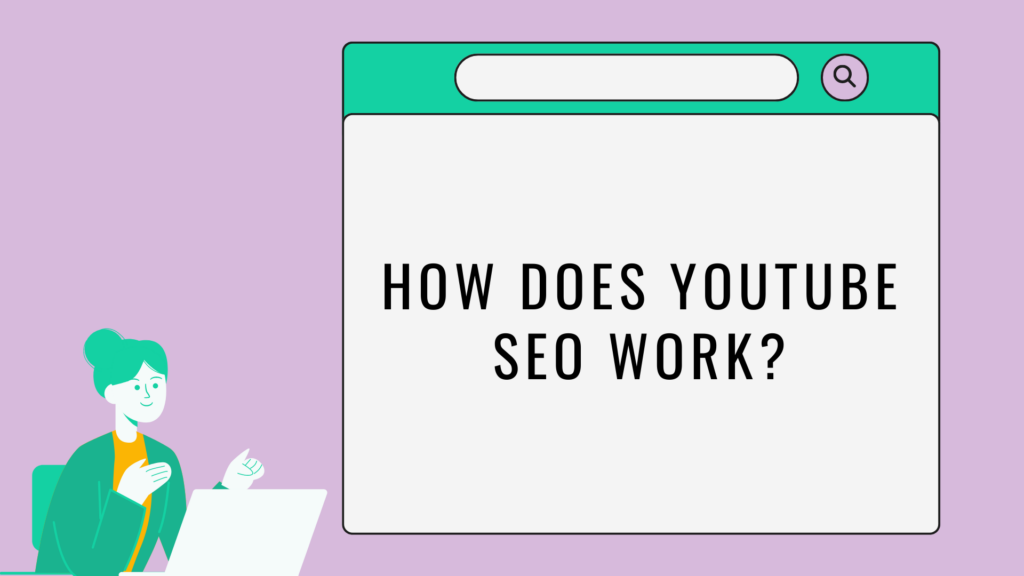
Let’s Talk About How YouTube SEO Works!
YouTube SEO, like all SEO, is complex.
It’s based on the YouTube algorithm, which is constantly changing. It’s also fairly likely that YouTube has more than one algorithm.
In general, here’s what matters when it comes to YouTube SEO:
1) KEYWORDS: When you make a video based on a keyword phrase your audience is already searching for, YouTube will likely try to show this video to a niche audience and online searchers when you upload it.
2) FIRST HOUR: If the video performs well in the first 1 hour and 24 hours, then it will get shown more broadly.
3) VIDEO VIEWS – TOTAL MINUTES: If the video gets past a certain level of total minutes viewed, it will get shown even more broadly.
4) VIDEO VIEWS – PERCENTAGE WATCHED: How long people watch your video and what percentage of your video is watched (on average) all affect whether your video surfaces in a YouTube search or gets suggested regularly.
5) COMPETITION: The less competition there is for a topic, the more likely your video is to show up in search.
6) SUGGESTED: Videos also show up on YouTube via “suggested” videos, which you can see on the sidebar when using the desktop version of YouTube. Whether or not you show up in suggested depends on how your target niche is reacting to your video.
7) SEARCH: Getting video likes and comments also helps you in the Google algorithm. If your video gets a lot of user engagement along with long video views, this helps your video show up in search.
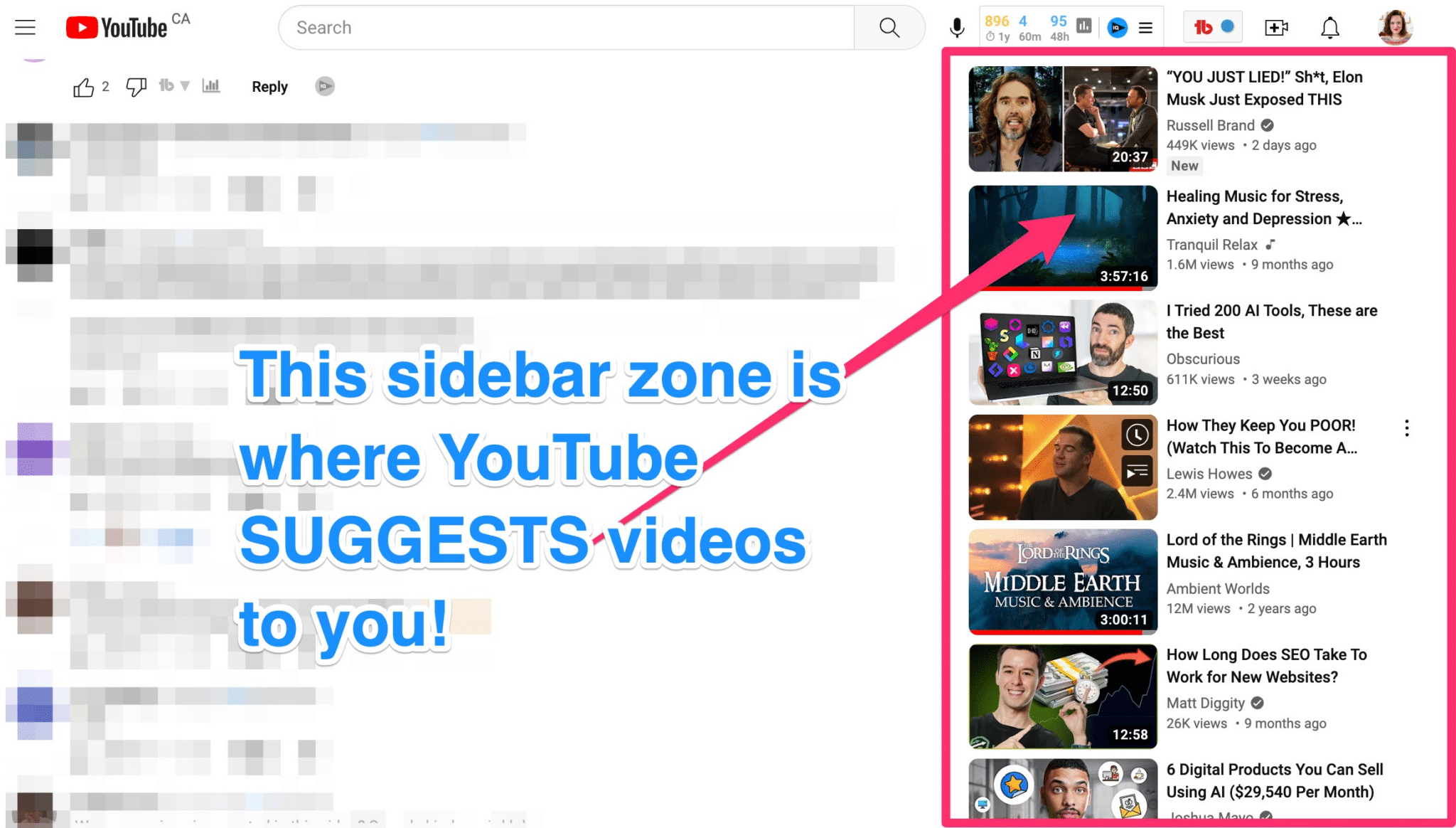
YouTube Wants the Viewers to Be Happy, Kinda
At the end of the day, YouTube wants its viewers to be happy with the content it gives them and to come back for more.
They also want their users to stay on the platform for as long as possible so that they can maximize the number of ads they get to show—YouTube makes most of its money from advertising, not from selling subscriptions.
So if you think of things from YouTube’s perspective, what matters most is that you make the viewer happy, meet the expectations of the searcher, and keep them engaged with your videos.
But one dark side of YouTube is that because time-on-platform is more important to them than their users’ overall happiness as humans, the platform can skew towards suggesting melodramatic or button-pushing topics to users because the algorithm knows these topics will keep people glued to the screen.
How Important Is SEO for YouTube?
SEO is important for YouTube if you’re a business owner who wants their videos to get found for important topics in your niche.
If you’re a content creator who wants to build an audience in a specific niche, then SEO is important for your YouTube channel’s growth.
However, if you’re a content creator who wants to make viral videos or build a personality-based channel, SEO is a lot less important.

How Do You Do SEO on YouTube?
I’m about to share a step-by-step process of how you do SEO on YouTube.
But keep in mind that you also have to be aware of how competitive your niche is and whether your channel has become authoritative for that niche yet.
The more niche your channel is, and the more authority it has for a topic, the better your videos will do.
In other words, getting good results with YouTube SEO usually takes time and a high volume of videos unless you’re in a niche with very low competition. Most channels that aren’t attempting to go viral need 25 to 50 videos (or more!) to build up an audience of 10,000.
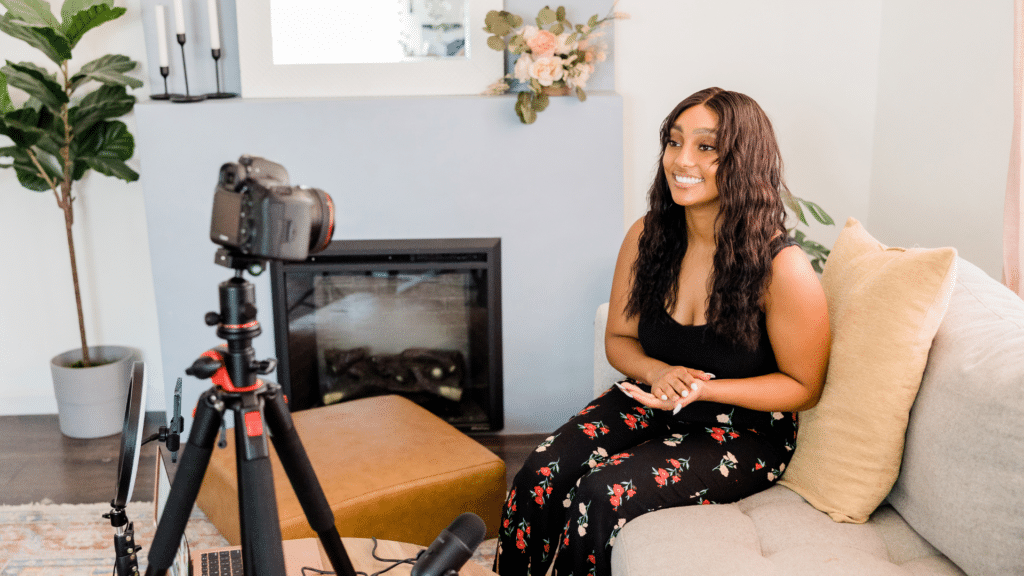
YouTube for Business Owners and Entrepreneurs
If you’re doing SEO to grow a business, you don’t need hundreds of thousands of subscribers to add hundreds of thousands of dollars to your bottom line.
One of my SEO clients is using YouTube videos to help increase website traffic and conversions. They only have 500 subscribers. But with our comprehensive SEO strategy, they’ve been able to grow their business dramatically every year since we started doing SEO together.
We’re not using YouTube SEO to build a massive channel; we’re using it to increase targeted traffic to their website, which we then convert into prospects and clients.
There’s a massive difference between what a business owner needs to do to grow with YouTube and what a YouTuber needs to do. However, the basic steps of SEO optimization are still the same.
Basic YouTube SEO Steps
Pre-Production, Production, Post
1) Start with keyword research.
2) Find a target keyword, with good search volume and low competition.
3) Create a script or outline that answers all the potential questions a viewer might have about the topic.
4) Shoot and edit the video.
5) Make sure you get to the point right off the top so that the viewer knows that they’ve clicked on the right video.
6) Use a cliffhanger that’s highly related to your viewer’s interests or desired outcome so that they watch more of the video.
7) Leave space on the video in the last 20 seconds for an end screen where you can suggest one or two videos to the viewer.
8) Don’t waste your time on opening credits or anything that will slow down your video.
Optimizing On YouTube
9) Before you upload your video, rename the video file so that it contains the keyword.
10) Upload the video.
11) Name the video, giving it a title that contains the keyword near the front of the title.
12) Write a description for the video that contains the keyword.
13) Add as many relevant tags as possible to the video.
14) Don’t add tags that aren’t relevant.
15) Add an end screen to the video.
16) If relevant, add a related video suggestion during the video.
17) Add a table of contents to the video.
18) Upload subtitles to your video for close captioning.
19) Make a video thumbnail that relates to the keyword that people are searching and has an element of curiosity.
20) When you make your video public, make sure you share it widely in the first hour that it’s public.
21) Try to maximize video views in the first 24 hours that your video is public.
22) If your video thumbnail isn’t performing well, try a different thumbnail.
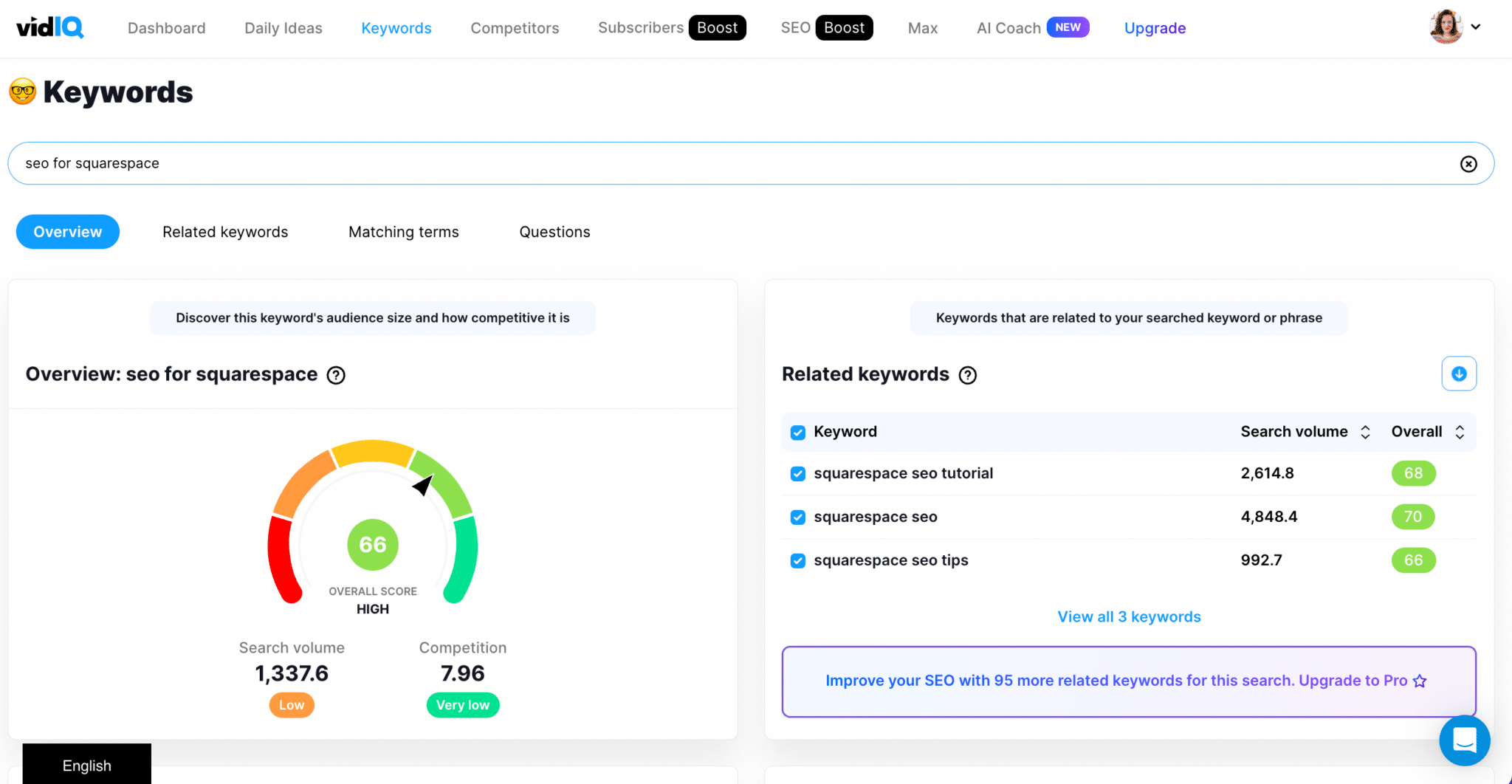
Top Youtube SEO Tools
When you’re doing keyword research for YouTube, you need to use tools that are designed for YouTube.
While there are a lot of useful SEO tools that allow you to create a robust strategy for your website, there are fewer tools for YouTube.
The top three YouTube SEO tools are VidIQ, TubeBuddy and Ahrefs. These three tools allow you to do keyword research, so you can find topics that are relevant to your audience.
You can see the approximate search volume for a keyword and the relative competition.
If you’re new to SEO, please note that when we refer to keywords, we’re actually referring to keyword phrases. For example, “best cameras 2023” is a keyword. While “best canon cameras for video 2023” is a long-tail keyword. Keywords can be single words or many words.
When you’re doing your keyword research for your YouTube videos, you should look for keywords that are relevant to your niche but not extremely competitive.
If there are no videos with “exact match” titles, this can be a good opportunity for you to create videos that will get found.
VidIQ
VidIQ is a software platform that provides tools and analytics for YouTube creators to help them grow their channels, optimize their video content, and increase audience engagement.
The platform offers features such as keyword research, video SEO, channel audits, and competitor analysis.
By leveraging the data-driven insights provided by VidIQ, creators can make informed decisions about their content strategy, tailor their videos for better discoverability, and monitor their performance over time.
While VidIQ offers a free version with basic functionalities
there are also paid plans with more advanced features for creators who require more comprehensive analytics and support.
TubeBuddy
TubeBuddy is a browser extension and mobile app designed to help YouTube creators optimize their channels, manage their video content, and grow their audiences.
The platform provides tools and features that make it easier for creators to navigate the YouTube ecosystem and make data-driven decisions.
Some of the key features offered by TubeBuddy include:
1. Keyword research
2. Video SEO
3. Thumbnail generation and A/B testing
4. Channel management tools
5. Competitor analysis and insights
6. Analytics and performance reporting
TubeBuddy offers a free version with basic features and paid plans with advanced functionality.
It’s a popular platform among creators looking to streamline their workflow and maximize their growth potential on YouTube.
Ahrefs
Ahrefs is a comprehensive SEO toolset designed to help website owners, digital marketers, content creators, and SEO professionals improve their online presence and visibility.
It provides a range of features for researching keywords, analyzing backlinks, monitoring website rankings, conducting competitor analysis, and uncovering content opportunities.
Personally, I love Ahrefs.
The only downside to this tool is that it has so much functionality you can waste a lot of time using it. For YouTube creators, you can do specific keyword searches just focused on YouTube.
Free SEO Tools for YouTube
There is only one free SEO tool for YouTube that I would recommend.
You can use the analytics within YouTube to do keyword research and discover new relevant topics for your audience.

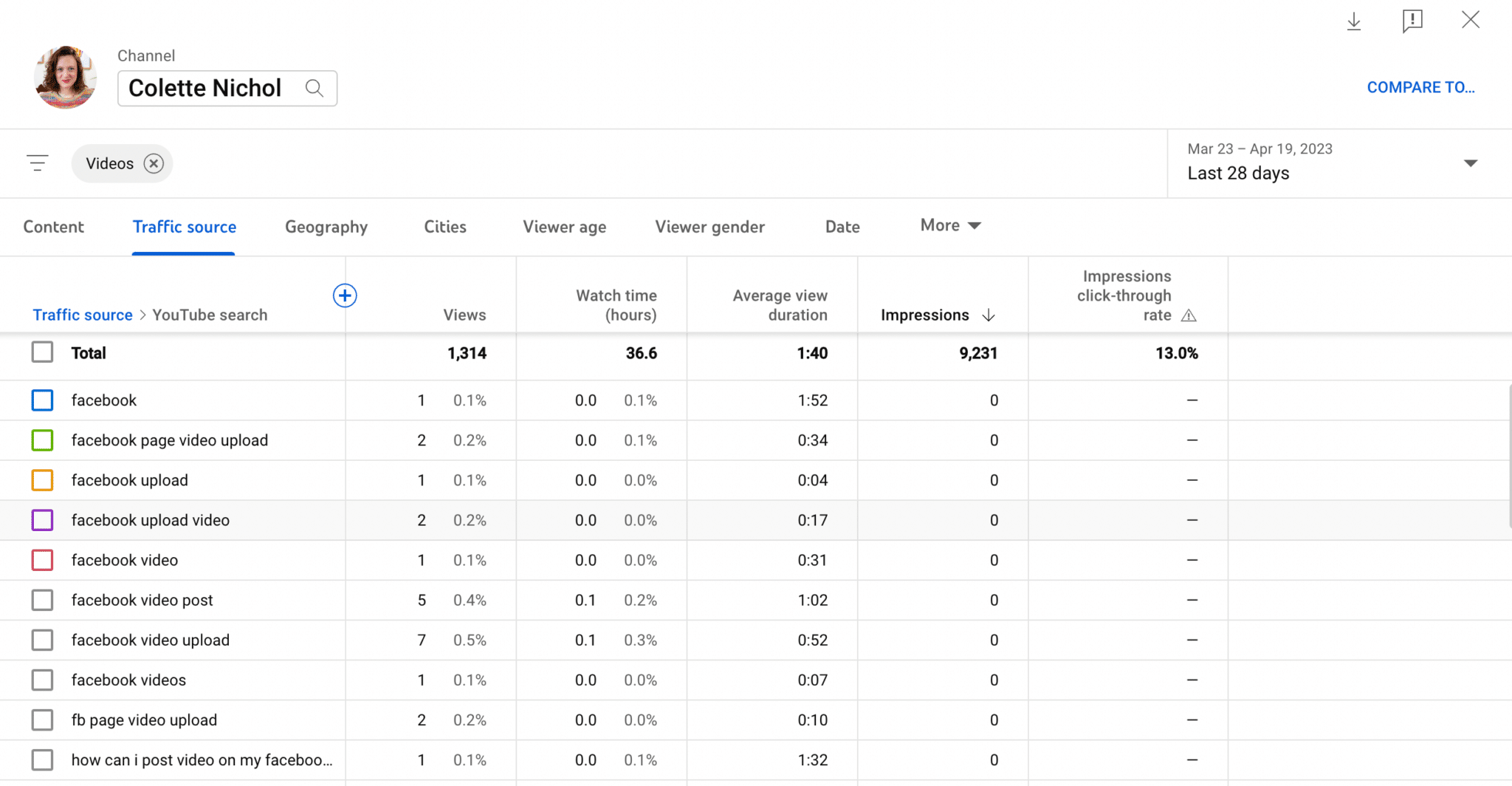
Other Keyword Research Tools
If you’re planning on doing SEO for your website as well as YouTube, then you may want to look at all the keyword research tool options.
The top keyword research tools are Ahrefs, SEMrush, Ubersuggest, and Keywords Everywhere. If you’re on a budget, get started with Ubersuggest and Keywords Everywhere. Ubersuggest is a great platform and allows you to get started with keyword research without spending hundreds per month on a subscription.
Keywords Everywhere is a Chrome plugin which allows you to see the search volume on anything that you type into Google.
It’s one of my favourite keyword research tools because it allows you to get a high-level overview of the volume in a niche while also looking at the Google search results. Using this tool is a good way to get to know a niche.
I’ve tried every single keyword research tool on the market.
Even the weird ones that are on the periphery of the market.
In my opinion, Ubersuggest is the best tool for simple keyword research. Ahrefs is the best tool for doing competitor research.
SEMRush is the best tool if you need guidance around the searcher intent of your keywords or if you’re doing a lot of local SEO.
Unfortunately, each keyword tool has unique strengths and weaknesses, which is why many SEO experts end up paying for a lot of different tools every month.
But if YouTube is your main area of interest right now, just look at VidIQ, TubeBuddy, Ubersuggest, and Keywords Everywhere. This suite of tools will cost you about $500 per year, but will be worth it.

Top YouTube SEO Tips for Ranking Videos
These top seven YouTube SEO tips will help you rank your videos:
1. Do keyword research before you record any footage.
2. Answer the most commonly asked questions in your video.
3. Get to the point of the video fast, so you don’t lose videos with a long intro.
4. Use a table of contents in your videos because it allows viewers to skip forward to the parts that are relevant to them.
5. Make sure your video title clearly tells the viewer what they’re going to get when they watch it.
6. Use some element of curiosity in the video thumbnail if possible.
7. Include the most relevant keywords for your video in the video description and tags.
How to Get Started with SEO for YouTube
To get started with SEO for YouTube, you need to decide what your channel is going to be about and then do keyword research.
You have to find video topics that are relevant to your niche but have relatively low competition.
First, make a list of all the potential video topics you could make for your niche. Then open up VidIQ and go to the keyword research tool.
Start plugging in your topic ideas and see what the search volume and competition for those keywords is like.
Create a spreadsheet where you’ll put your keyword list and video ideas.
Once you’ve done a few keyword research sessions, it’s time to choose your top 10 to 15 video ideas. Create rough outlines of your video topics. Make sure you answer the commonly asked questions for each video topic.
Then do your first video shoot.
Try to shoot 4-5 videos in one session and get them all edited. Some people suggest launching a channel with 5 videos. But you can also start by uploading one video and releasing a new video each week. If you’re aiming to build a serious YouTube channel, you have to know that it’s like having a part-time job.
You’ll need to release a new video every week for at least a year before you start to see big results.
But if you’re doing YouTube SEO to boost traffic to a business website, then you don’t need to go crazy with YouTube videos. You can achieve dramatic results with a well-optimized website and 10 to 20 high-quality SEO-optimized videos per year.
YouTube SEO vs. Regular On-Page Organic SEO
YouTube SEO isn’t the same as regular on-page organic SEO.
If you’re trying to grow a business, you usually need more traffic to your website. You need people to know that your business exists, so you can turn their awareness into interest, engagement, and sales.
One of the best ways to get more traffic to your website is with regular on-page SEO.
To do on-page SEO, you need to create website pages for all your products and services and optimize them for the key search terms that people are actually using. Then you need to add supporting content that is more informational in nature. Next, you need to ensure that your website is correctly structured and all your related content is interlinked.
Doing SEO properly does take time, but it will pay off.
If you do YouTube SEO and on-page SEO, you can expect to get way better results than someone who does just one or the other.
🌟Related Post: These Affordable SEO Services for Small Businesses Provide Great ROI
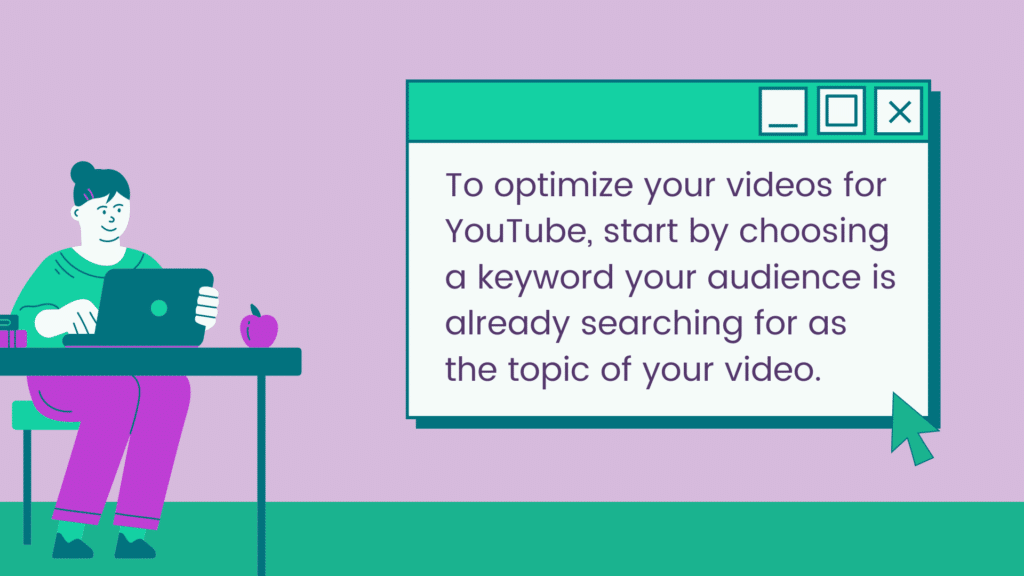
Best Course for Learning YouTube SEO
I learned the basics of YouTube SEO from Sunny Lenarduzzi’s course YouTube for Bosses and James Wedmore’s (very old) Video ROI course.
If you’re serious about getting good at YouTube SEO or building a channel, then I’d recommend buying Sunny’s course. I don’t know any faster way to learn how to get your videos to rank than by following her training.
There’s so much more to know than what’s covered in this article. The only other option for learning YouTube SEO properly is to watch as many videos on YouTube as possible.
But the problem with that strategy is you won’t get a system.
Sunny’s course provides a system that allows you to get results.
Her course isn’t perfect, but it’s the best option for video creators and business owners who want to rank their videos and grow a channel.

Common Questions about YouTube SEO
Is hiring an SEO for my Youtube Channel a must?
Hiring an SEO for your YouTube channel isn’t a must.
You can learn how to do SEO for your channel by taking a course or watching a lot of videos. However, if you’re a business owner who runs a profitable and successful business, learning SEO is likely not the best use of your time. In this case, you should hire an SEO to do the research for your videos.
Then you can take that research and create a strategy for your channel.
Or you can hire a video production company that does everything for you.
How do you do SEO on YouTube?
Once you upload your video to YouTube, you need to optimize every part of the video for SEO.
First, you give the video a title that contains the keyword near the start. Then you write a description that contains your keywords. Next, you upload a thumbnail. Make sure the file name for the thumbnail contains the keyword.
Next, add tags and a table of contents to your video. Finally, add an end screen.
How does a YouTube SEO optimize my videos?
A YouTube SEO will optimize your videos by doing keyword research to discover the best topics for your niche and helping you to create videos that are relevant and low-competition.
They’ll optimize every single part of the video when you upload it. And they’ll help you to create a launch strategy to make the most of the video’s first 24 hours.

How does YouTube rank videos?
Nobody can tell you exactly how YouTube ranks videos, but there are some things we do know.
You can see patterns over time when you pay attention to what happens with videos and try to figure out why some succeed and others fail.
Basically, the YouTube algorithm is trying to keep people on the platform and returning to the platform by serving videos that they will enjoy.
If your videos aren’t doing well, it’s either because your niche is extremely competitive or your videos aren’t living up to the expectations of the viewer.
When trying to get your videos to rank, you need to make sure that anyone genuinely interested in the topic will want to watch at least half of your video.
How much time someone spends on a video is an important ranking factor. If people spend 6 minutes on average watching your video about making sourdough and 4 minutes watching another video about making sourdough, your video will likely start to rank higher.
Here’s a list of some of YouTube’s ranking factors:
- Click-through-rate
- Video watch time
- Video watch rate
- Video performance in the first hour
- Video performance in the first 24 hours
- Like to dislike ratio
- Watch to like ratio
- Watch to comment ratio
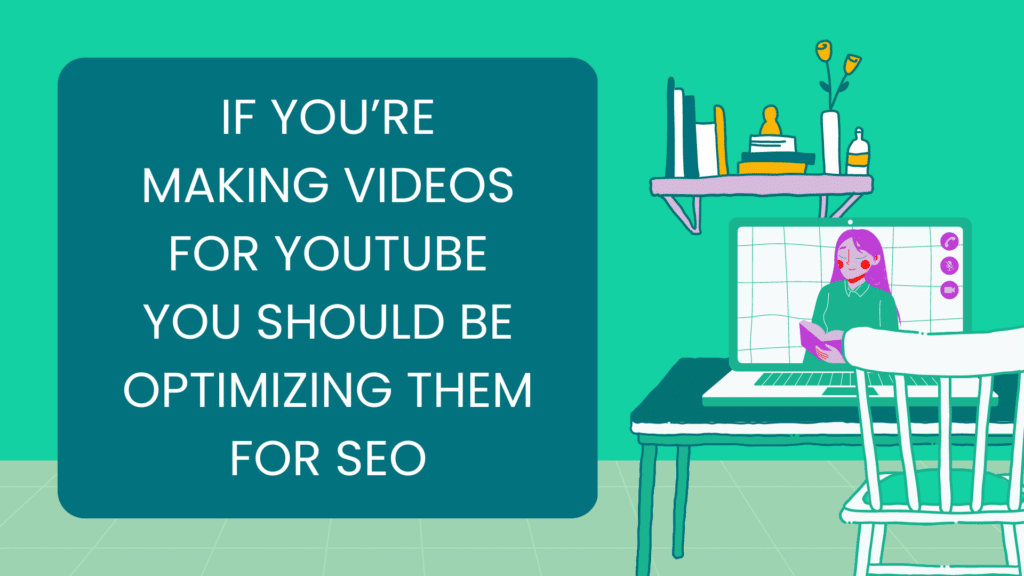
Is it worth optimizing videos on YouTube?
If you’re making videos for YouTube, you should be optimizing them for SEO.
If you’re not, then you’re leaving views on the table.
What are the main YouTube SEO Guidelines?
YouTube SEO guidelines are essential for creators to improve the discoverability and ranking of their videos on the platform.
Here are some of the main YouTube SEO guidelines to follow:
Keyword research: Identify relevant, low-competition keywords for your content.
Optimize video titles: Include target keywords in your video titles while keeping them engaging, informative, and concise.
Optimize video descriptions: Write detailed video descriptions incorporating target keywords.
Use relevant tags: Add relevant tags to your videos using keywords that help YouTube understand the topic.
Create custom thumbnails: Design eye-catching thumbnails that represent your video content and make scrolling users want to click.
Engage with viewers: Respond to comments and create a community around your channel.
Use annotations and end screens: Add annotations and end screens to your videos to promote related content, playlists, and subscribes.
Create playlists: Organize your videos into thematic playlists to make it easier for viewers to find and watch more of your content.
Optimize video watch time: Focus on creating engaging content that keeps viewers watching longer.
Promote your videos: Share your videos on social media platforms and other online communities to increase visibility and drive traffic.
By following these YouTube SEO guidelines, creators can improve their chances of being discovered through YouTube search and recommendations. The more your videos get found, the more you can grow your audience.

Google vs YouTube
Google and YouTube are search engines, but they serve different purposes and operate in distinct ways.
While you’re here to read about YouTube SEO, you should also consider building out your online strategy with traditional SEO. It’s often possible to get way more traffic and build an audience more quickly with traditional SEO than with YouTube. When you combine both strategies, you can grow even faster.
Google is still much more popular than YouTube and has a massive number of unique searches every day.
The reason it can be easier to start ranking on Google is due to the fact that there are more low-competition keywords that you can go after compared to YouTube.
Traditional SEO refers to optimizing your website so that it gets found on the first page of Google for multiple search terms.
Just like you build a YouTube channel around one or two main umbrella topics, you do the same with your website.

Why You Should Use Video SEO with a Pillar Page Strategy
When you use video SEO or YouTube SEO with a pillar page strategy on your website, you’re going to be able to drive a lot more traffic to your site than if you only do one form of SEO.
I’ve seen blog posts double their traffic in 30 days just because a custom video was added to the page.
When your YouTube channel is aligned with your website.
Google sees you as having greater authority and sends more traffic to your site.
In addition, custom videos that are optimized for YouTube will keep people on your website pages longer while also providing a better user experience.
This, in turn, will drive your pages higher on the search results pages and bring more traffic to your site.
🌟Related Post: 19 Video SEO Tips for Beginners

DIY Video vs. Premium Video
DIY VIDEO FOR CONTENT CREATORS AND NEW BUSINESSES
If you’re just starting out and don’t have a huge budget, then it’s okay to do DIY video.
Just make sure your videos still look good. You can use the latest iPhone to get both good imagery and audio quality. Stick your iPhone on a tripod, use a lav mic or external microphone, and shoot a high-quality talking head video.
Or go out in the field and get someone to film you in action.
Then add b-roll and action sequences to make your videos more interesting.
If you have the funds to hire an editor, you’re going to save yourself a lot of time.
PREMIUM VIDEO FOR ESTABLISHED BUSINESSES
Next, if you’re a business owner with a marketing budget, then it’s worth your time to do premium videos that will look great ten years from now.
Why? Because videos can rank on Youtube for a VERY long time. My YouTube video on “how to upload a video to facebook” is still getting thousands of views every month. I made that video over 8 years ago!
So, an investment in video isn’t like an investment in Tiktok.
Your videos become assets that help your business grow for years.
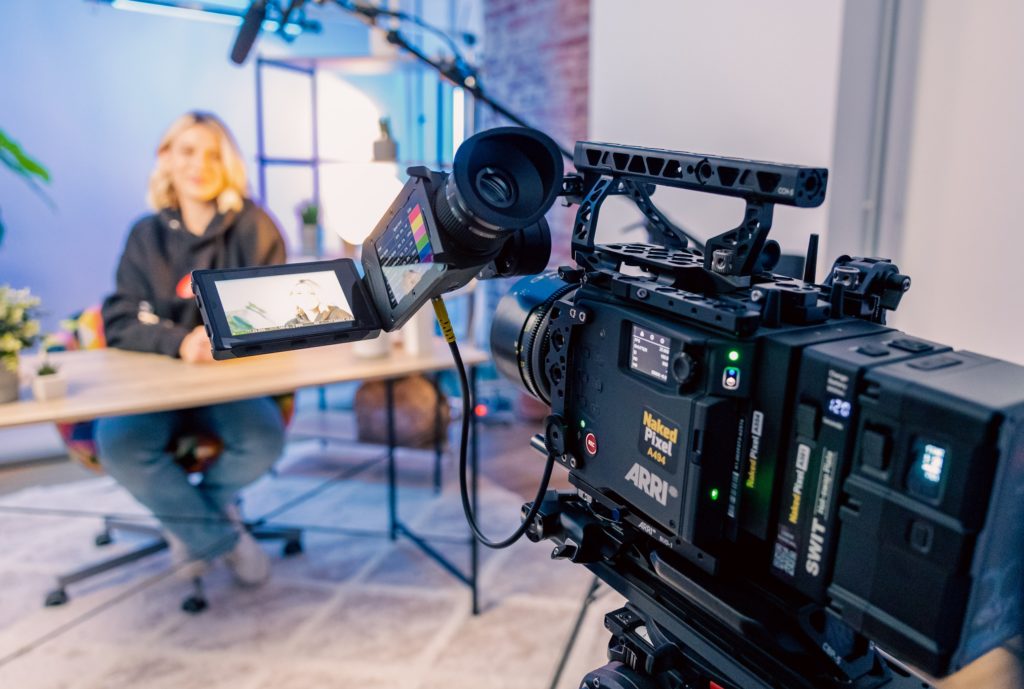
How to Make Videos that Don’t Look Totally DIY
If you want to make videos that don’t look totally DIY, you need to focus on image quality, audio quality, stabilization, and adding b-roll and shot sequences to keep your audience’s attention.
Put your camera on a tripod or gimbal to keep the footage stable. Use a good microphone and get the microphone close to your subject. Shoot b-roll and action sequences that relate to the topic and tell a story.
If you want to make videos that look amazing for years to come, then focus on creating a strong production plan, gathering a variety of footage, and capturing great audio.

Quantity vs. Quality
If your aim is to build a massive YouTube channel, you can either start making tons of videos or you can focus on trying to make just a few videos per year but have every single one of them go viral.
If you’re a business owner looking to grow revenue, I’d suggest focusing on quality and strategy over quantity. Make great videos that are highly targeted and strategic. These videos will make you money for many years.
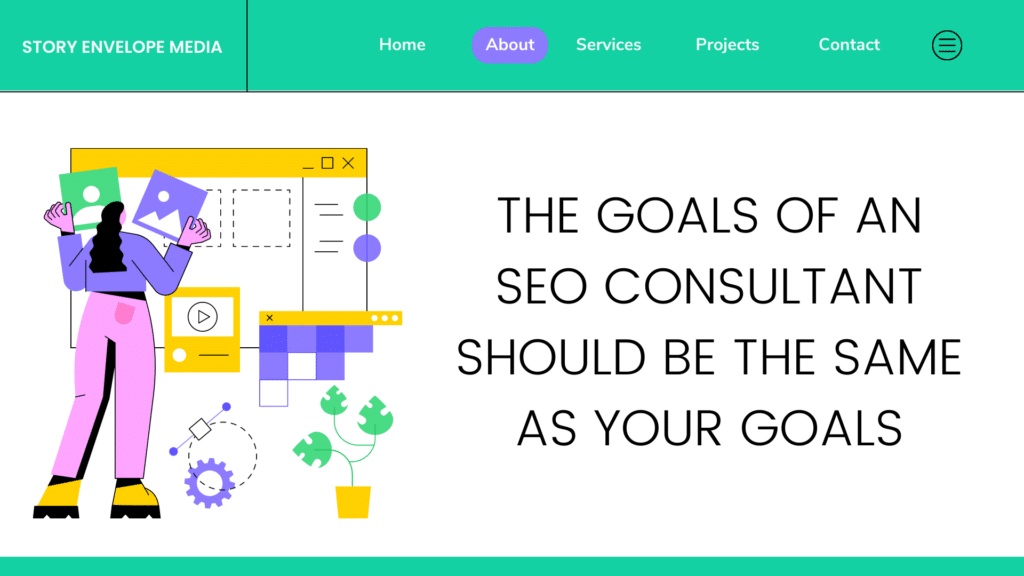
Work with an SEO Consultant or Expert
If you’re starting to feel overwhelmed by the thought of trying to do all of this alone, it may be wise to work with an SEO consultant and expert.
You can have a video SEO strategy created for you which you can then execute alone or with your team. Or, if you’re on a limited budget, you could hire an SEO expert to consult on your project for a few hours.
Finally, if you’re a business owner who is serious about growing your business with SEO and you have a marketing budget.
I’d recommend you hire an SEO consultant to build out a strategy and help you execute it.
Most business owners are busy, and you don’t want to waste your time on a strategy that isn’t optimized for your goals. That’s why hiring an SEO consultant may be worth it for you.
Summary
YouTube SEO starts with keyword research.
When you’re starting your YouTube channel, make videos on topics that have low competition but at a reasonable amount of search volume.
Use tools like VidIQ and TubeBuddy to do your keyword research and help with your video SEO strategy.
Consider combining a pillar page strategy on your website with your YouTube SEO strategy.
YouTube SEO isn’t about doing just one thing. It’s about layering multiple actions to strengthen the chances that a video will start surfacing regularly in searches and get suggested to viewers by the YouTube algorithm.
YouTube’s algorithm is focused on providing a great on-platform experience to the user and keeping them there as long as possible. It focuses on engagement metrics like watch time, likes, comments, and click-through rate.

What Will YOUR YouTube SEO Plan Look Like?
After I made that one successful YouTube video about how to upload a video to Facebook, I did nothing.
I didn’t try to grow my YouTube channel or add more videos. I just left the video hang up there in outer space, getting more views.
Four years later, I decided to try growing a channel in the filmmaker and video creation space.
I’m going to be honest with you here: I burned out! Trying to build a channel in one of the MOST competitive niches in the YouTube space while also doing client work was too much for one person. So I stopped.
I currently grow my niche email list thanks to the traditional SEO that I’ve done on this website.
I get 40 to 50 new email subscribers every month off of just two popular blog posts on this site. I only add new videos to my channel if they correlate with a blog post I’m trying to rank higher on Google.
Meanwhile, one of my main clients is adding multiple six figures in additional revenue to their business every year with an SEO strategy that has just 20 videos and 50 blog posts.
The biggest thing I’ve learned from doing traditional SEO and YouTube SEO over the past few years is this: you don’t have to go crazy with tons of content to start building an audience or growing your business.
My three most important YouTube tips for you are:
Make less content, but do it strategically.
Prioritize quality over quantity.
Make sure you’re targeting a clear audience and have a clear goal.
Video marketing, combined with traditional SEO and YouTube SEO techniques, helps maximize the visibility and reach of your videos across various platforms, including search engines and YouTube, allowing you to engage a wider audience, drive website traffic, and achieve your marketing objectives effectively.
More SEO Articles and Guides
How to Find a Good SEO Consultant as a Very Small Business
Is SEO Worth It, or Is It a Scam?
Quick Guide to SEO Marketing for Small Businesses
Next Steps
If you’re a business owner and want to work with an SEO consultant and expert, please schedule a 15-minute call with me.
The link to schedule the call is below. I work with local and global businesses that are in a growth cycle and want to increase their traffic. If you’re already spending money on advertising, but you’re not maximizing your online strategy with SEO, then you’re missing out on a major source of revenue.
There’s no better traffic than the people who are already looking to have their problems solved.
In most cases, SEO traffic beats all other forms of traffic and tends to have the highest ROI of all forms of online marketing.
SEO & Video Production Vancouver + Worldwide
Hi, I’m Colette Nichol! I’m a video producer, story strategist, and SEO expert based out of Vancouver.
Whether you’re based in Vancouver or the middle of the Arctic circle, I can help you get found online. As an SEO consultant and video producer, I typically work with clients who are experts in their field and want to reach a larger national or international audience and increase business revenue. If you’re open to combining high-end evergreen videos with traditional on-page SEO and a content strategy, you can expect to see massive results. I’d love to hear about your business goals to see if working together might be a fit.
Get in touch HERE to schedule a 15-minute introductory call.

About the Author
Hi! I’m Colette Nichol. I’m a solo filmmaker, SEO expert, story strategist, and digital marketer based out of rainy Vancouver, Canada. I’ve been helping local expertise-driven businesses and global brands since 2014 when I founded Story Envelope Media.
In 2017, I started applying SEO to my work with clients and in my own business. The results were extraordinary, and I got obsessed!
If you’re interested in working together, please reach out. I’d love to hear about your business goals to see if we can help.
We currently take on a maximum of one new client per month and are typically booked 3-months in advance, so please reach out early.